#DomesticCars
Rare Rides Icons: The History of Imperial, More Than Just a Car (Part XV)
We return to the Imperial’s saga once again today, at a very low point for the brand. Though the Fuselage Look of 1969 had propped up Imperial’s sales and generated consumer interest, sales were in decline after the ’69s debut. Chrysler put less and less money into its flagship, as parts sharing increased while options and trims did the opposite. There was a second version of the Fuselage Look for 1972 that showed as longer, lower, and heavier than ever before. And though the new metal buoyed sales slightly, the U.S. car market as a whole saw record sales in 1972 and 1973. 1973 was the last such record year for America, and it coincided with the last Fuselage Imperial. Chrysler had a decision to make about its flagship brand.
Rare Rides Icons: The History of Imperial, More Than Just a Car (Part XIV)
In our last installment of the Imperial saga, we worked through the earliest years of Chrysler’s Fuselage Look era. The Imperial wore its hefty new styling well, even though it shared more parts and even body panels with Chrysler’s lesser New Yorker. Although the new looks were a sales hit in 1969, customers who wanted a Fuselage Imperial bought one immediately. By 1971 things were much grimmer. Imperial was relegated for the first time to a singular trim: LeBaron. A sign of the times, the brand was no longer advertised separately in marketing materials, but alongside Chrysler’s other offerings as “Imperial by Chrysler.” However, for 1972 it was time for a big update, as Chrysler tried to bump up the Imperial’s seriously sagging sales.
Rare Rides Icons: The AMC Matador, Medium, Large, and Personal (Part IV)
We finish up our Rare Rides Icons coverage of the AMC Matador today by spending some time abroad. The Matador maintained a few different passports as it donned new branding and nameplates for its various international adventures. And unlike many domestic cars of the period, AMC saw sales success when its midsize arrived in other markets.
Rare Rides: The 1958 Buick Limited Lineup, a Very Expensive Roadmaster
Today’s Rare Ride was a single-year offering at Buick; it came and went in 1958. As General Motors reworked its large car offerings that year in response to styling changes at one of its biggest competitors, it reintroduced a historical nameplate at Buick: Limited.
Rare Rides Icons: The History of Imperial, More Than Just a Car (Part XIII)
We entered the Fuselage Look era of the Imperial in our last installment, as Chrysler shook off the conservative and upright styling its flagship brand wore prior to 1969. Prices were notably slashed and quality suffered as Imperial shared body panels with its Chrysler siblings, incidents that in previous decades would’ve been out of the question. We pick up in 1970, for the second year of the C-body Fuselage Imperials.
Rare Rides Icons: The AMC Matador, Medium, Large, and Personal (Part III)
We left off in Part II of our AMC Matador coverage during the model lineup’s second year on the market. The Matador was working overtime by 1975, as AMC marketed their largest car to the intermediate and large car buyers. Unfortunately, things only went downhill from there.
Rare Rides Icons: The History of Imperial, More Than Just a Car (Part XII)
As we make our way into the 12th installment of Rare Rides Icon’s Imperial coverage, the third generation 1967 Imperial became the shortest-lived in the nameplate’s history. After the decade-long reign of the D-body, Imperial switched to the unibody C platform to cut costs, and move on from dated body-on-frame underpinnings. But it was an odd time to introduce a new car, as the C-body was no spring chicken when the Imperial debuted. More importantly, Chrysler was on the cusp of an entirely new styling direction: The Fuselage Look.
Rare Rides Icons: The AMC Matador, Medium, Large, and Personal (Part II)
AMC introduced its new Matador lineup into the very competitive intermediate (midsize) car market in 1971. It was a time when the company was making advances in build quality, streamlining, and an industry-leading all-encompassing warranty. And though the Rebel by any other name was selling decently, it wasn’t grabbing market share as AMC expected. Especially lackluster were sales of the Matador Coupe, a body style that was the top seller amongst its domestic competitors. As 1974 approached, AMC prepared to make some big changes to Matador, and introduce an all-new two-door.
Abandoned History: The Vehicle Production Group and Its MV-1, Accessible Mobility MPV
Historically speaking, the handicap accessible vehicle market in North America was catered to by aftermarket companies, who’d convert standard passenger vehicles (usually larger vans) to be accessible. But in the early 2000s, a couple of entrepreneurs had a new idea: A commercial vehicle designed from the get-go as accessible. Let’s talk about the Vehicle Production Group, it’s a bit of a wild ride.
Rare Rides Icons: The History of Imperial, More Than Just a Car (Part XI)
We return once more to Imperial today and find ourselves in 1967. The earlier portion of the Sixties was a turbulent time for Imperial, as the D-body soldiered on from 1957 through 1966 model years as the Imperial marque’s second-generation car. In 1967, Imperial’s lead designer Elwood Engel managed Imperial’s transition to a new shared platform. Say hello to C.
Rare Rides Icons: The AMC Matador, Medium, Large, and Personal (Part I)
The American Motors Matador line was many things to many people during its run from 1971 to 1978. Built domestically and abroad, Matadors occupied more than one size class, a broad range of price points, and were even dressed in fashionable luxury garb for a while. Come along as we explore the world of Matador.
Rare Rides Icons: The History of Imperial, More Than Just a Car (Part X)
This 10th installment of our Imperial coverage finds us at a turning point in its styling. Virgil Exner had been fired but was allowed to stay on as a design consultant at Chrysler. Exner’s immediate replacement was Elwood Engel, who’d designed the 1961 Lincoln Continental and then jumped ship when he was not promoted at Ford. Chrysler execs wanted out of Exner’s winged, googly-eyed stylistic cave, and Engel took the aged D-body in a very different direction for 1964.
Rare Rides: Vanderhall Motor Works and The Venice, Three Wheels Only
Today’s Rare Ride is presented to you because I saw one in traffic on Wednesday. Unsure what the three-wheeled thing I saw was, I gave a vague description to Twitter and was informed almost immediately that what I’d seen was a Vanderhall Venice. Let’s learn some three-wheel car-bike things.
Rare Rides Icons: The History of Imperial, More Than Just a Car (Part IX)
Today marks the ninth installment in our history of Imperial, as the calendar flips over to 1961. The second generation Imperial is not quite to the middle of its tenure on its own platform, the D-body. Virgil Exner imposed a wild new styling direction on Imperial for 1960 that was both outlandish visually, and heavy-handed in its execution. “More of that,” said Exner for ’61.
Rare Rides Icons: The History of Imperial, More Than Just a Car (Part VIII)
We continue our Rare Rides Icons series on Imperial today. Starting in 1957, Chrysler’s then-separate luxury arm spent more and more time on bold styling, and less on the hand-built quality for which the company’s first cars in 1955 and 1956 were known.



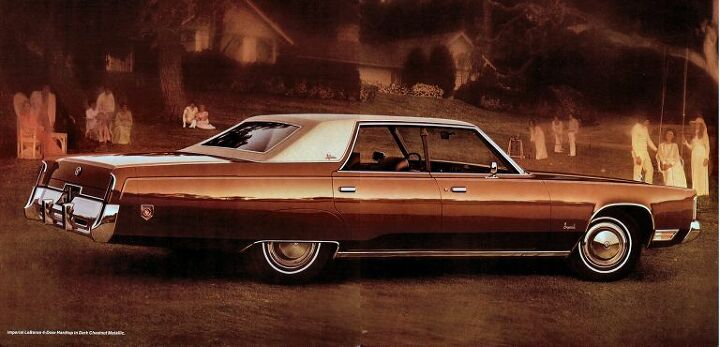
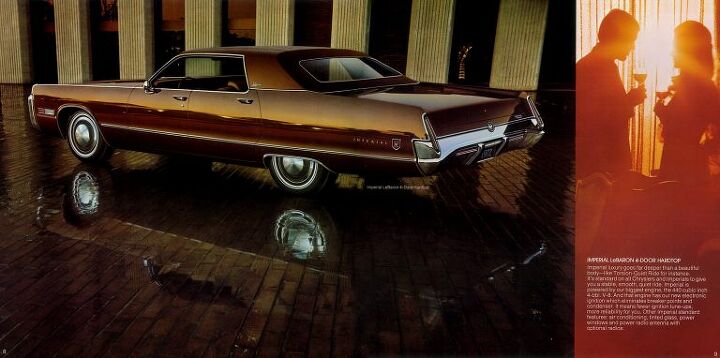
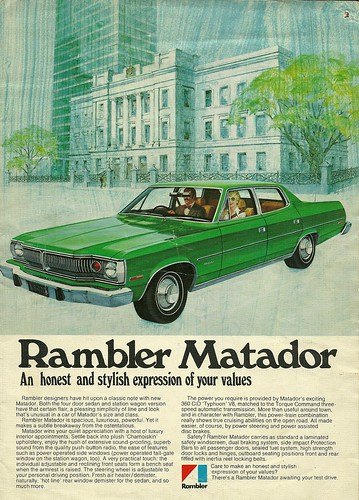

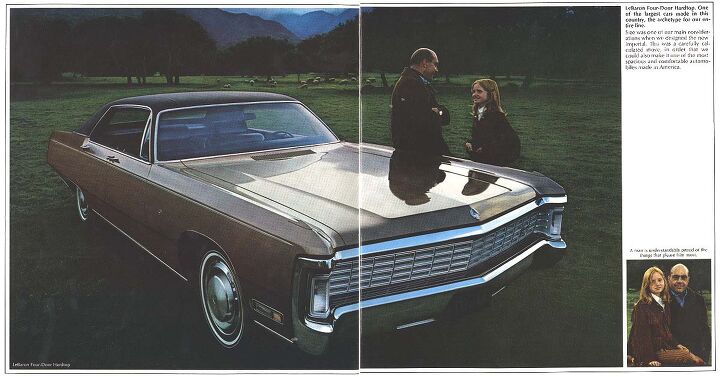
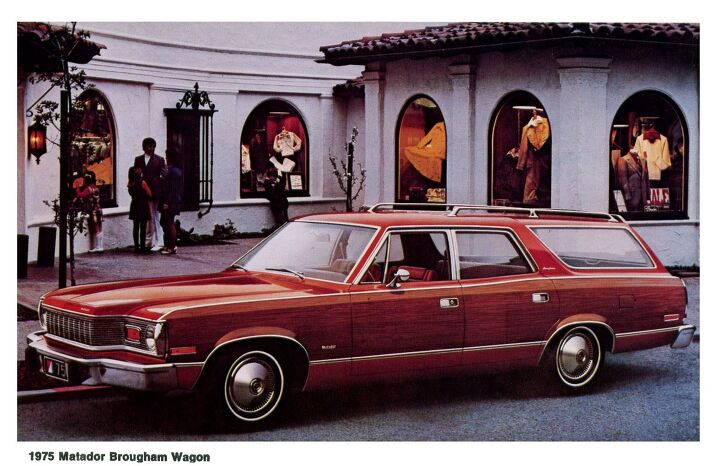





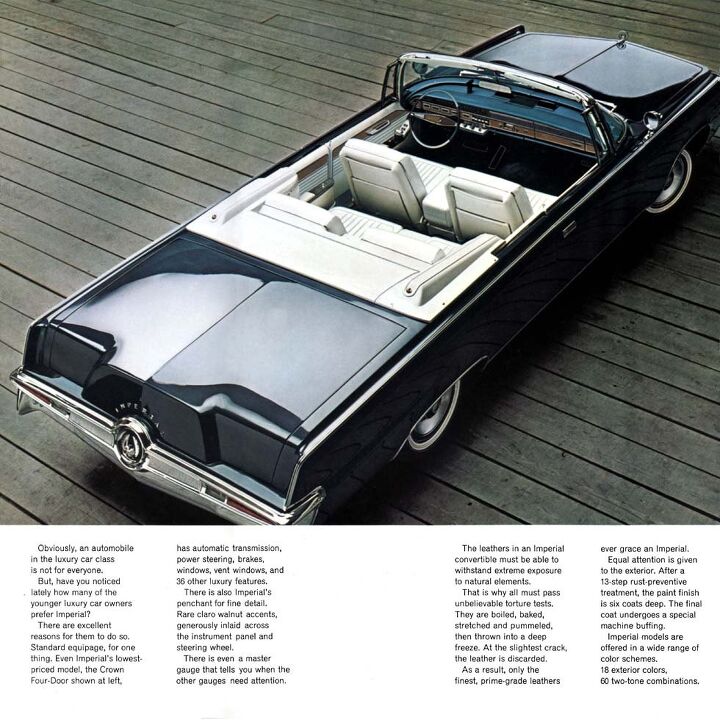















Recent Comments